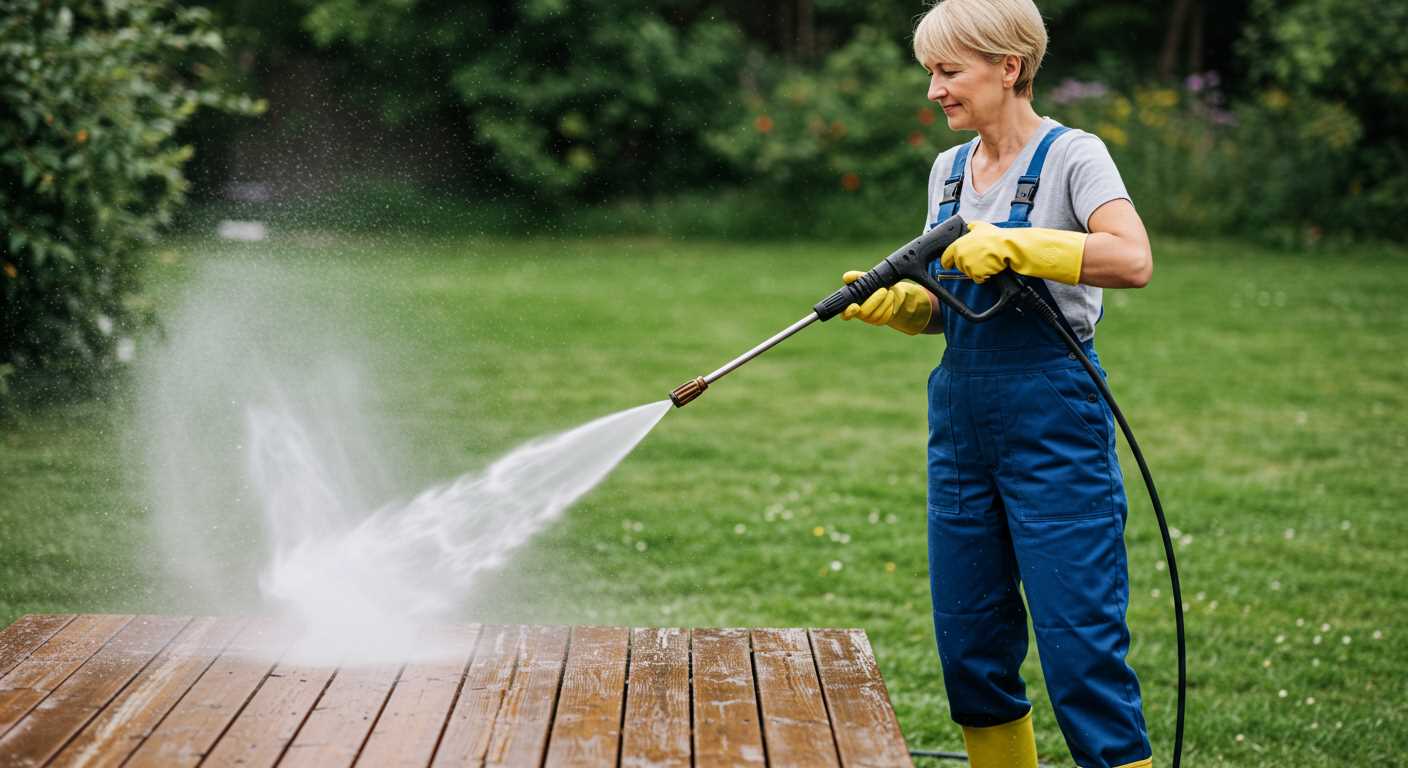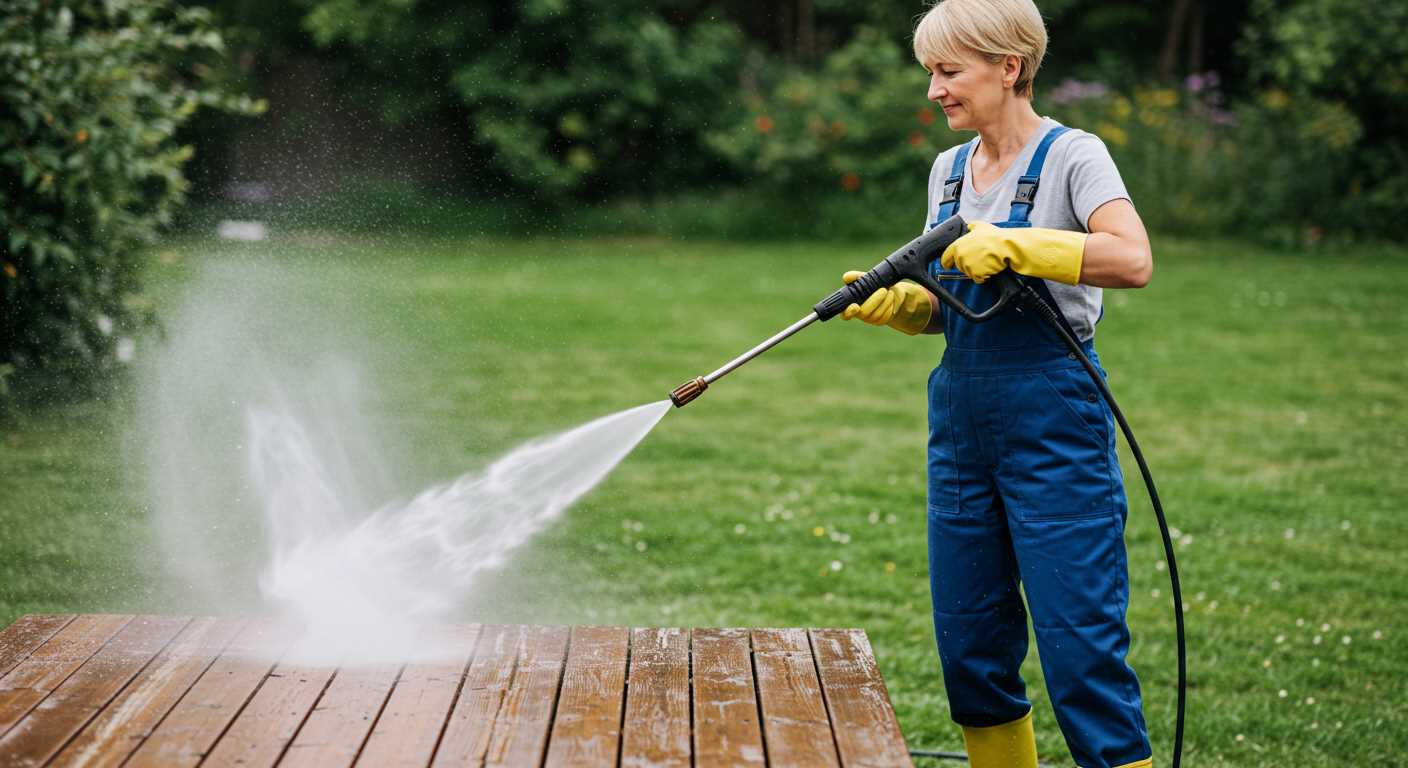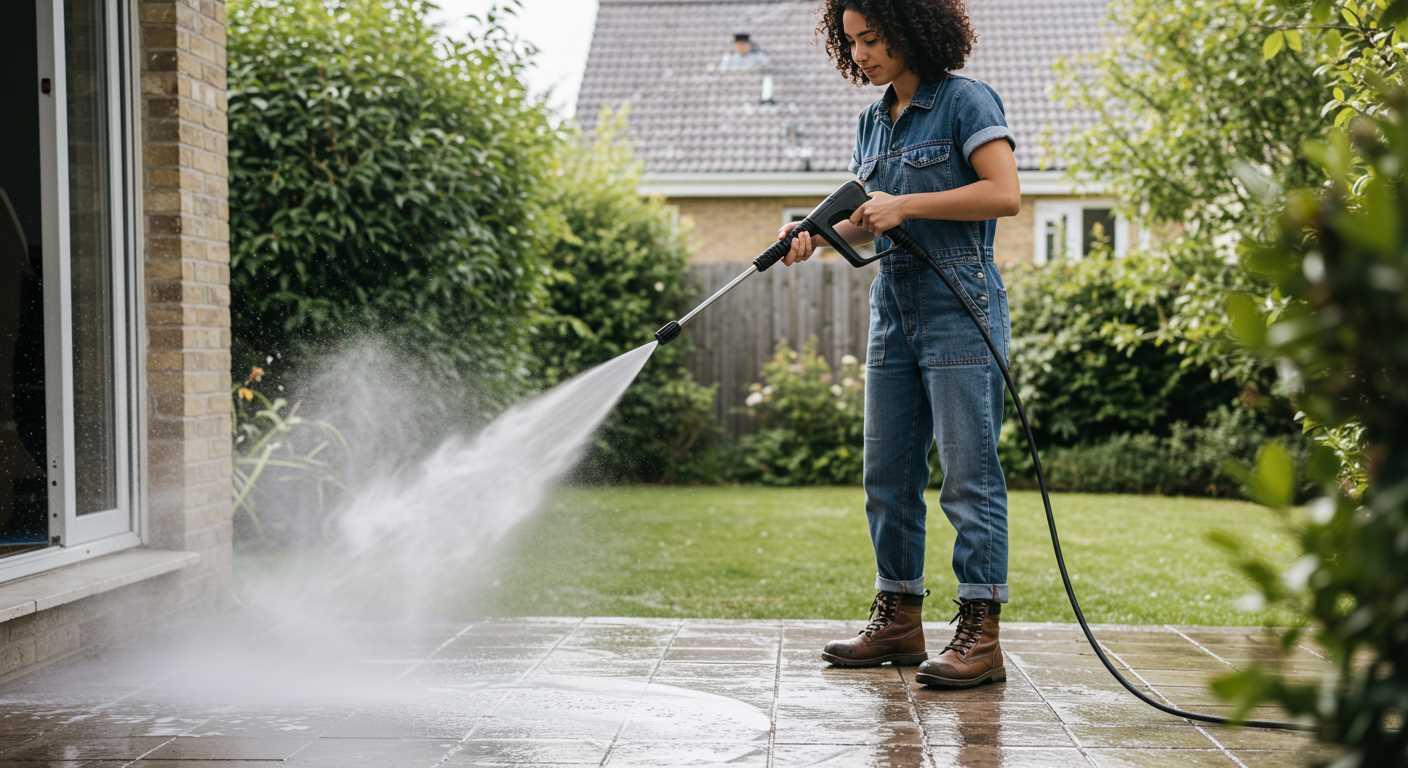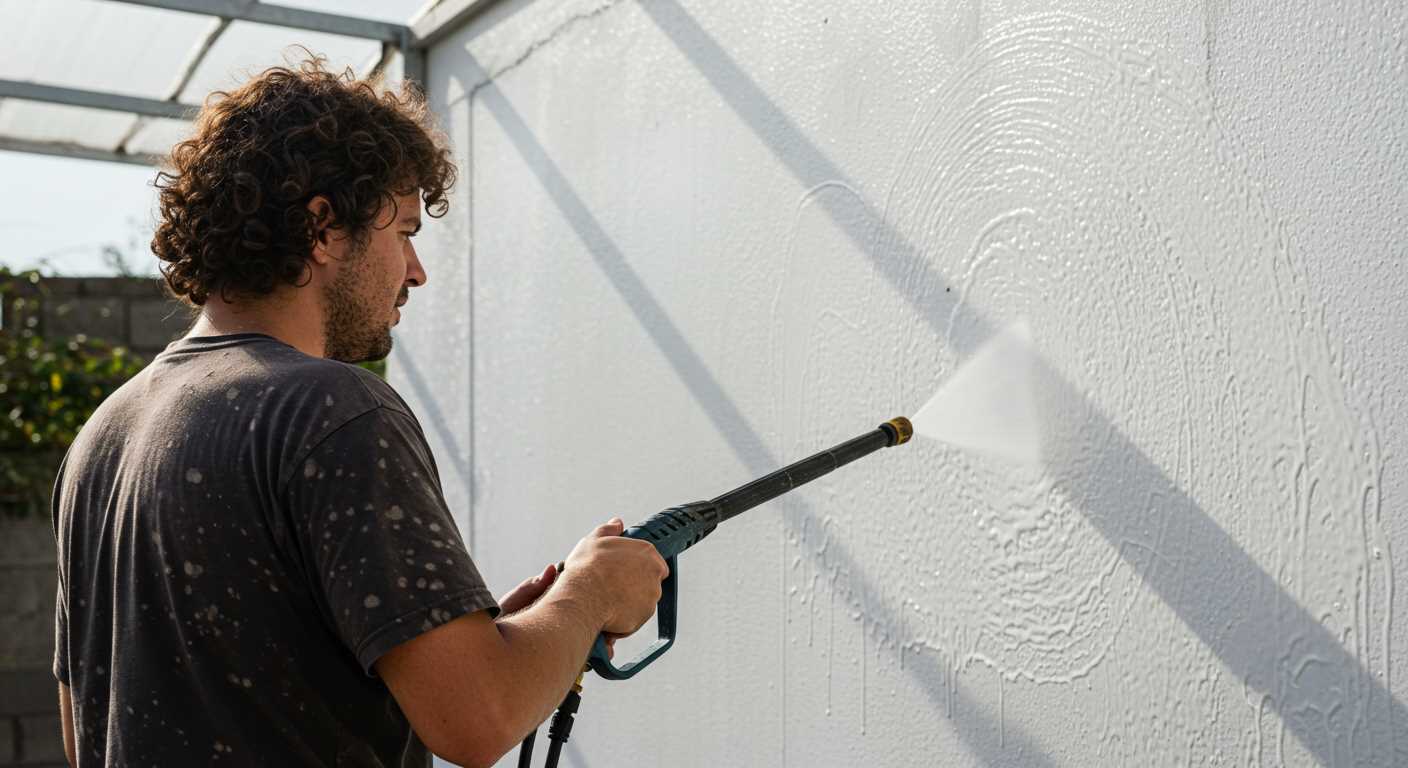




First, check the power source. Many times, I’ve found that the simplest issues stem from a faulty outlet or a disconnected power cord. Ensure the plug is securely connected and test the outlet with another device to confirm it’s functioning properly.
Next, inspect the ignition system. In my experience, a worn spark plug is often the culprit behind the failure to ignite. Remove the plug and examine it for signs of wear or carbon build-up. If it looks questionable, replacing it can often resolve the issue quickly.
Don’t overlook the fuel supply. I recall a time when a client struggled for days with their unit, only to discover that the fuel tank was nearly empty. Ensure there’s sufficient fuel, and if it’s old, consider replacing it with fresh fuel to avoid starting difficulties.
Another common area to investigate is the air filter. A clogged filter can restrict airflow, leading to starting problems. Cleaning or replacing it can make a significant difference. I’ve seen many customers overlook this simple maintenance task, only to be amazed at the improvement once it’s addressed.
If the device still remains unresponsive, examine the safety features. Many models come equipped with safety switches that can inadvertently engage. Check that all switches are in the correct position and that the device isn’t locked out due to a safety mechanism.
Lastly, if you’ve gone through all these steps and it’s still not functioning, consider consulting the user manual for troubleshooting tips specific to your model. Each design can have unique quirks, and the manufacturer may provide insights based on common issues.
Troubleshooting Your Equipment
Check the fuel tank and ensure it’s filled with fresh gasoline. Old fuel can cause starting issues. When I was troubleshooting a stubborn unit, I discovered that a simple change to new fuel solved the problem immediately.
Inspect the Power Source
If using electric equipment, verify that the outlet is functioning. Use a multimeter to check for voltage. I recall a time when a client called me about a unit that wouldn’t activate, and it turned out the outlet was faulty. Plugging it into a different socket made all the difference.
Examine the Components
Look at the ignition system. Spark plugs can wear out and fail to ignite properly. Inspect for corrosion or damage. Replace any worn parts. In one instance, I swapped a spark plug, and the unit roared to life. Don’t underestimate the importance of a good spark.
| Component | Action | Notes |
|---|---|---|
| Fuel | Replace with fresh fuel | Old fuel can cause starting issues |
| Power Source | Test outlet voltage | Check for faulty outlets |
| Ignition System | Inspect and replace spark plug | Look for corrosion |
Don’t forget to check the air filter as well. A clogged filter can restrict airflow, preventing the engine from starting. I once had a machine that wouldn’t run, and after cleaning the filter, it worked perfectly. Simple maintenance can save a lot of headaches.
Check the Power Supply and Electrical Connections
Verify the power source before proceeding with any repairs. Plug in another device to confirm the outlet is functioning. If it’s not, inspect the circuit breaker or fuse box for tripped switches or blown fuses.
Next, examine the power cord for any visible damage. Look for cuts, fraying, or exposed wires. If you spot any issues, replacing the cord is necessary to avoid electrical hazards.
- Ensure the power cord is securely connected to both the outlet and the machine.
- Check for any signs of corrosion or dirt on the electrical connections of the unit. Clean these with a soft cloth to ensure a solid connection.
- Inspect the on/off switch and any safety features. Make sure they are functioning correctly and not stuck in the off position.
During my time as a consultant, I encountered several machines with issues stemming from simple power supply problems. One memorable instance involved a unit that simply needed a loose connection tightened. After reconnecting the wires, it roared back to life, much to the owner’s relief.
Additionally, if your model has an extension cord, ensure it is rated for the power requirements of the unit. Using an under-rated cord can lead to voltage drops, preventing the machine from operating properly.
After these checks, if everything appears in order, proceed to examine the motor components. However, always prioritise safety; disconnect the power supply before any internal inspections.
Inspect the On/Off Switch for Faults
First, check the on/off switch for any visible damage or wear. Over time, these switches can become faulty due to frequent use or exposure to moisture. Look for cracks or corrosion, as these can hinder proper operation.
Next, test the functionality of the switch. Use a multimeter set to the continuity setting. Disconnect the power source and remove the switch from its housing. Place the multimeter probes on the switch terminals; a reading of zero indicates a faulty switch. If it shows continuity when in the ‘on’ position but not in ‘off’, replace the switch.
Wiring connected to the switch can also cause issues. Inspect the wires for fraying or disconnection. Ensure all connections are secure and free from corrosion. If you find any damaged wiring, it’s best to replace it to avoid further complications.
Sometimes, dirt and debris can accumulate around the switch. Clean the area with compressed air to remove any obstructions. A clean switch can often resolve minor issues related to starting problems.
Lastly, if you’ve replaced the switch and checked the wiring but still face challenges, consider consulting the user manual or contacting a professional for further assistance. In my experience, a faulty switch is often a simple fix that can save you time and frustration.
Examine the Fuel System for Blockages
Check the fuel lines for any obstructions. A clogged line can prevent proper fuel flow, causing operational issues. Disconnect the fuel line from the carburettor and inspect it. Use a clean cloth to wipe away any debris. If it’s blocked, a thorough cleaning or replacement may be necessary.
Inspect the Fuel Filter
- Locate the fuel filter, typically found along the fuel line.
- Remove it carefully and check for dirt or sediment.
- If it appears dirty, replace it with a new one to ensure an unobstructed fuel flow.
Check the Fuel Tank
Examine the fuel tank for any signs of contamination. Old fuel or debris can cause issues. If the fuel appears cloudy or contains sediment, drain the tank completely and refill it with fresh fuel. Always use the recommended fuel type for your equipment.
Inspect the fuel cap as well. A damaged or improperly sealing cap can create a vacuum, hindering fuel delivery. Ensure it is in good condition and fits securely.
- Replace any damaged components.
- Regular maintenance of the fuel system can prevent future blockages.
Assess the Spark Plug Condition and Connection
Examine the spark plug for signs of wear or damage. Remove it and inspect the electrode for corrosion, carbon buildup, or excessive wear. A clean, intact electrode is crucial for optimal ignition. If you find any of these issues, replacing the spark plug is advisable. During my time in the industry, I encountered many machines that simply needed a new spark plug to come back to life.
Check the Connection
After ensuring the spark plug is in good shape, inspect the connection to the ignition system. A loose or corroded connection could prevent the engine from firing. Make sure the wire is securely attached to the spark plug and check for any signs of fraying or damage. During one repair, I found a pressure cleaner that seemed completely unresponsive; a simple reconnection of the spark plug wire resolved the issue. Regular maintenance of these connections can save time and hassle down the line.
For further exploration of troubleshooting, consider other areas of your equipment as well. Learning about different devices can be beneficial; for example, a digital camera come with picture fix may offer insights into handling various technical issues.
Evaluate the Water Supply and Hose Issues
Check the water supply first. Ensure the tap is fully open and water flows freely. A weak supply can hinder performance. During one of my visits to a client’s property, I found they had a partially closed valve, which limited the water flow and caused the system to malfunction. Simple adjustments made all the difference.
Next, inspect the garden hose. Look for kinks, cracks, or blockages. A damaged hose can restrict water flow significantly. I recall a situation where a customer had a hose with a small tear. It was hard to spot, but it caused enough of a disruption to prevent the unit from working properly. Replacing the hose resolved the issue immediately.
Also, ensure the hose connection is secure. Loose fittings may lead to leaks, and this can reduce the pressure needed for operation. I’ve seen hoses pop off due to poor connections, leading to frustrating downtime. Tightening the connections can often resolve these issues.
Consider the length of the hose as well. Using a hose that is too long can reduce water pressure. Ideally, keep it as short as possible while still reaching your work area. In one instance, a longer hose caused significant pressure loss, making the job take much longer than necessary.
Finally, if you’re using an electric pressure washer for patio, verify the compatibility of the hose with the equipment. Not all hoses are built the same, and ensuring compatibility can save you from unnecessary headaches down the line.
Look for Signs of Internal Mechanical Problems
Pay attention to unusual noises during operation. A grinding or rattling sound might indicate loose components or damaged bearings. If the motor struggles or hesitates, it could be a sign of internal friction or issues with the pump assembly.
Check for Leaks
Inspect for fluid leaks around the unit. Oil or fuel leaks can suggest worn seals or gaskets. These issues not only impair performance but can also lead to more severe damage if ignored. Addressing leaks promptly can prevent further complications.
Monitor Pressure and Flow Rate
Low pressure or inconsistent flow can hint at internal blockages or pump failures. If you notice a significant drop in performance, it may be time to disassemble the unit for a thorough inspection. Look for debris in the pump inlet or damaged internal components. Replacing worn parts may restore functionality.
Lastly, check the alignment of moving parts. Misalignment can lead to premature wear and tear. Ensure all components are correctly positioned and secured. A simple adjustment could save you from more extensive repairs down the line.
Consult the User Manual for Troubleshooting Tips
Referencing the user manual is paramount. Each model has specific nuances and quirks that seasoned users may overlook. I recall a time when a colleague struggled with their unit, convinced it was a mechanical fault. A quick glance at the manual revealed a simple reset procedure they had missed. Manuals typically include troubleshooting sections that address common issues and their solutions tailored to your specific machine.
Check for any troubleshooting charts in the manual. They often list symptoms alongside potential causes and remedies. For instance, if you find the motor is unresponsive, the manual might suggest verifying the power supply, which aligns with the steps I outlined earlier. This direct correlation can save you valuable time and frustration.
Many manuals also feature diagrams. These can help identify components you might need to inspect or replace. I once had a user who was baffled by a persistent issue. The manual’s diagram highlighted a small filter that was clogged, something they had never considered. A quick clean, and the machine was back to full functionality.
Don’t overlook safety warnings and maintenance tips included in the manual. These sections often provide insight into proper care and usage that can prevent future problems. Remember, the manual is your best friend when troubleshooting; it’s designed to guide you through the specifics of your equipment.
FAQ:
What are the common reasons why a pressure washer won’t start?
There are several reasons a pressure washer may fail to start. Firstly, check the power supply; ensure the machine is plugged in and that the outlet is working. A blown fuse or tripped circuit breaker can also be the culprit. Secondly, examine the fuel level and quality, as stale fuel can cause starting issues in gas-powered washers. Additionally, if it’s an electric model, inspect the power cord for any damage. Lastly, consider the presence of water in the pump; if there’s no water supply, the motor may not operate correctly.
How can I troubleshoot a gas pressure washer that won’t start?
To troubleshoot a gas pressure washer, begin by checking the fuel. Make sure it has fresh gasoline and isn’t contaminated. Next, inspect the oil level and ensure it’s at the appropriate level. If the engine still won’t start, examine the spark plug for wear or corrosion; cleaning or replacing it may help. Also, look for any clogged air filters, as they can restrict airflow and prevent starting. If all else fails, consider checking the carburettor for blockages or issues with the fuel line.
What should I do if my electric pressure washer is not starting?
If your electric pressure washer isn’t starting, first verify that it’s plugged in and that the outlet is functional. Check the power cord for any signs of damage. Next, ensure the safety switch is engaged; many models have a trigger lock that needs to be released. Additionally, inspect the water inlet for blockages as some machines won’t start without a proper water supply. If the problem persists, it may indicate an issue with the motor or internal components, which may require professional assistance.
Can I fix a pressure washer that won’t start myself, or should I seek professional help?
Many pressure washer issues can be diagnosed and fixed by the owner, especially common problems like checking the fuel, inspecting the power supply, and cleaning the spark plug. If you’re comfortable with basic mechanical tasks, you can often resolve minor issues without professional help. However, if the problem involves complex components like the pump or motor, or if you’re unsure about the repairs, it’s wise to consult a professional. Safety should always come first, so if you feel out of your depth, seeking expert assistance can save you time and potential damage.






.jpg)


